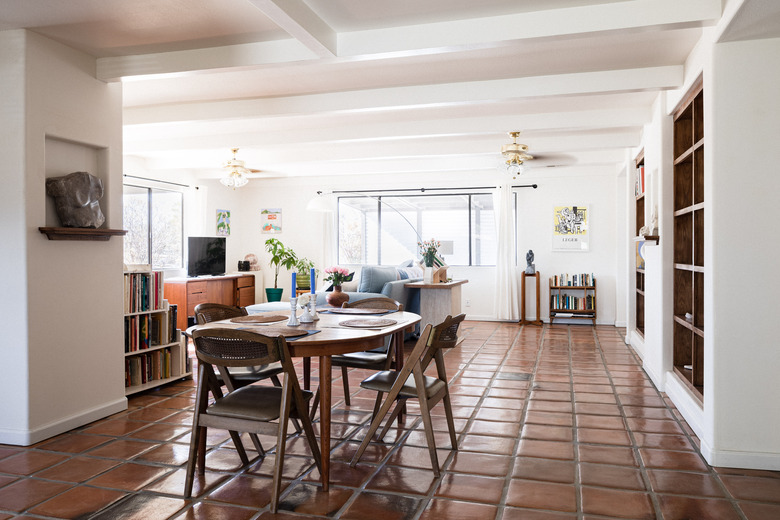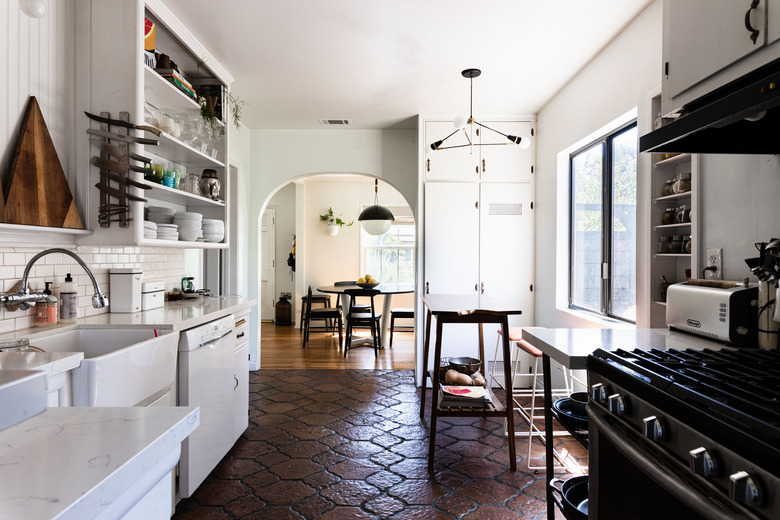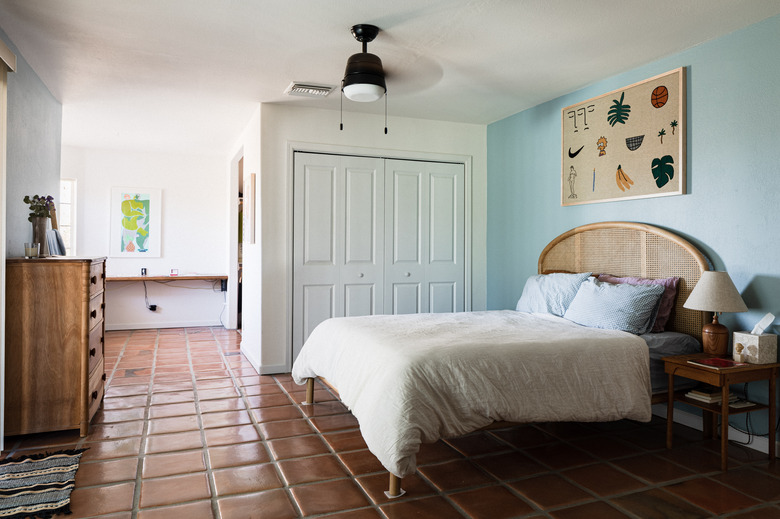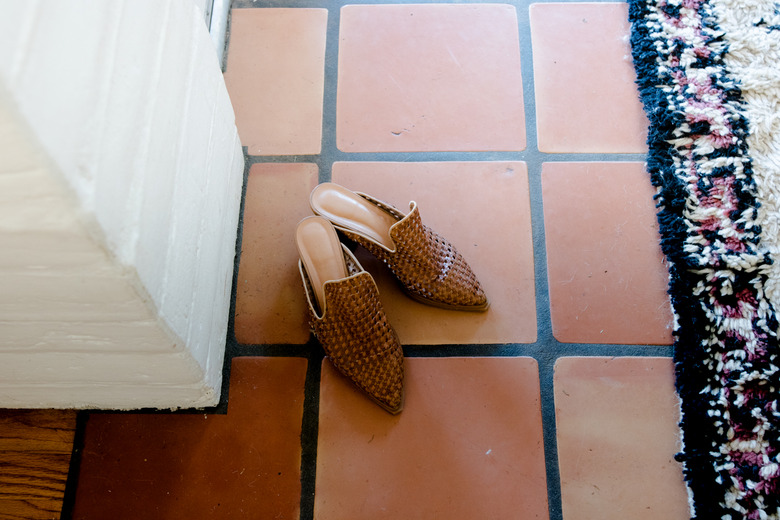Mexican Saltillo Tile: A Homeowner's Tile Flooring Guide
Mexican Saltillo tile is a traditional choice of flooring for homes in Mexico and the southwest United States. Handmade from clay and typically sundried and lightly kiln-fired, these Mexican tiles are an all-natural and environmentally friendly material. True Saltillo tiles are all made in the same region around Saltillo, Mexico, which means they are all made from the same clay. The process to make the tiles lends itself to a fair amount of natural color variations, providing homes with a warm and lived-in feel.
A Naturally Varied Tile
A Naturally Varied Tile
Often referred to as terracotta tiles, true Saltillo tiles are unique because of the region that they are made in. The handmade tiles bring warm orange or red tones, with a natural (though sometimes uneven) top texture. The process for making the tile requires the clay to be sifted first, and the finished quality of the tiles depends greatly on how well the clay was cleaned.
Because each tile is handmade without machinery, irregularities are to be expected. These can include chips, bumps, dips or slight waviness, all of which fans of the tile consider critical to the rustic nature of the material. Because the tiles are often sun dried, sometimes you'll even catch an animal footprint or two in a tile.
Pros and Cons of Saltillo Tile
Pros and Cons of Saltillo Tile
Mexican Saltillo tile can be an ideal choice for homes that want to follow the home styles of Mexico, Spain or the American Southwest. Their beauty is undeniable, but they're not as easy to install or as durable or low-maintenance as ceramic or porcelain tile.
Pros
- With a variety of shapes, including hexagon and octagon,
Saltillo floor tile offers some interesting opportunities for floor design even
if it's limited in color options. - Terracotta tile, due to its thickness, helps to regulate temperature, staying
warmer in winter and cooler in summer than porcelain or ceramic tiles. - When used in high-traffic areas, like the living room or
kitchen, the color of the tile naturally helps hide dirt. - Like other types of tile, Saltillo is very hard-wearing and virtually impervious to moisture. This makes it suitable for wet areas like kitchens, bathrooms, patios and pool decks.
Cons
- The natural, unglazed clay of the tile is highly susceptible to staining if it is not properly sealed. Sealer must be reapplied periodically to maintain moisture- and stain-resistance.
- Being a softer tile, Saltillo is more prone to chips and other damage than glazed ceramic or porcelain tile.
- Inconsistent thickness and natural variation make the tiles tricky to install. Professional installation makes the otherwise cheap material relatively expensive.
- Saltillo fades and changes color with prolonged exposure to sunlight. However, this is not inconsistent with the rustic nature of the material.
- Saltillo tile cannot be used outdoors in freezing climates.
Mexican Saltillo Tile Cost
Mexican Saltillo Tile Cost
According to Remodeling Expense, the average cost of professionally installed Saltillo tile is $6.30 per square foot, while the overall cost range is $4.72 to $8.05 per square foot. This puts Saltillo within the range of most other floor tiles, including porcelain and many types of natural stone tile.
The majority of the cost of Saltillo tile lies in the installation. Terracotta tiles can be bought for as little as $1.50 per square foot, while the installation alone can be more than double that cost. It's possible to save considerably by installing your own Saltillo tile, but this is not a good project for beginners. Getting the edges of the tiles even and avoiding hollow pockets beneath the tile require expert techniques and careful attention to detail.
Installing and Sealing Mexican Saltillo Tile
Installing and Sealing Mexican Saltillo Tile
Saltillo tile is installed much like other types of floor tile by using thinset mortar adhesive over a flat substrate of cementboard (or other tile backer) or concrete. But a few factors make Saltillo installation more difficult. In addition to the adhesive spread onto the substrate, each tile also gets "back buttered" with a thick layer of adhesive before it is set onto the floor. Back buttering helps to eliminate air pockets and fill any natural voids or high spots in the back of the tile. It also allows installers to adjust the height of the tile to keep all of the tiles in the same plane.
Another potential complication with Saltillo tile is the width of the grout joints. Large floor tiles, particularly the classic square tiles, have very wide grout joints, perhaps 3/4 or 1 inch wide. Keeping widely spaced tiles in alignment is much harder than aligning tiles with thin joints.
After all of the tiles are laid, the tile surfaces are sealed with at least two coats of sealer before the tiles are grouted. The sealer prevents the grout from staining the tile surfaces. Once the grout has cured, the entire floor is sealed again to ensure complete coverage and protection. Old House Online recommends using a topical sealer designed for clay and reapplying the sealer every two to five years, following a deep cleaning.



